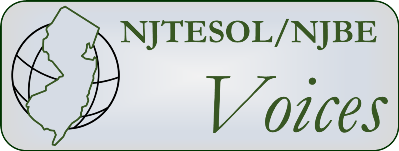NJ Teachers of English to Speakers of Other Languages/
NJ Bilingual Educators
ARTICLES
Bilingual Secondary: Andrea Fontenez- A Reflection On Remote Learning
Bilingual ESL/Early Childhood: Jessica Perdomo-O’Hara- Using Student-Centered Charts as a Reflection Tool to Drive Instruction
ESL Elementary: Angela Pape- Scaffolding Instruction for English Learners
ESL Secondary: Hana Prashker- Planning for September
Higher Education: Patricia George- The Transition to Virtual Classrooms: Spring 2020
Parent and Community Action: Gabriela Colon- When You Have the Talk: Race Conversations
Special Education: Solange Lopez-Murphy, Gwendolyn Williams, & Colleen Gallagher- Promoting Classroom Discussion: Lessons from the Field of TESOL
Teacher Education: Tasha Austin- Meet Your Newly Appointed NJTESOL/ NJBE Teacher Ed SIG Rep
Guest Contributor: Nina Zucker- Virtual Teaching Reflection
Guest Contributor: Angello Villarreal- Student Ambassador Program
Guest Contributor: Jason Valente- Panoramic Prospects Post Pandemic & Protest
A Reflection On Remote Learning
By Andrea Fontenez, Ed.D.
Bilingual Secondary Special Interest Group (SIG) Representative

It is the end of another academic year and now it is time for us to pause, breathe, and reflect on our teaching during remote learning. Although for some teachers and administrators like me, who continue to work in the summer, remote learning is not over yet! It is important to take the time to be reflective and continue to grow professionally and personally. Many educators will be busy helping emergent bilingual students as they continue to learn virtually to mitigate learning loss, take online credit recovery, while working to prevent as much as possible the so-called “summer slide.”
A lot was learned from this 2020 remote learning experience, and here are six teacher qualities that promoted a nurturing and engaging distance learning environment for emerging bilingual students:
1. Being persistent: Teachers made continued phone calls and followed up on students who did not show up to the google meeting, had the most success in student engagement. Kudos to those teachers who kept their Google Meeting open for several hours during the day and stayed connected with their students as they completed their work.
2. Being flexible: If one way of doing things didn’t work, teachers were quick to try a different way. Teachers were creative when modeling a lesson, introducing new learning, explaining the assignments in detail, providing feedback, extending deadlines, and giving students multiple opportunities for improvement and work completion.
3. Being organized: This meant ensuring that students knew when the class started, making Google Meeting links available in the Google Classroom, starting the meetings at the same time and sharing a predictable schedule. Teachers shared the expectations for the week and then guided students throughout the week to make sure they completed the work.
4. Being a good communicator: Teachers made sure that the directions were clear and that students had access to the materials that they needed as PDF or audio books, online resources, and teacher-created videos or online videos related to the topic. Communicating to students what the assignment was and making it accessible by clearly posting it and explaining in the Google Classroom and via Google Meets. Using Screencastify, Loom or other programs to model a lesson or give directions and posting in their google classroom so that students who were not able to attend could watch it at a later time.
5. Being supportive of and working collaboratively with colleagues: Teachers who actively participated in common planning time with their peers had the opportunity to share strategies and learn from each other. Accepting the challenge and looking for solutions as a team facilitated the process and created opportunities to best serve students.
6. Being accessible to parents: Communicating with parents was vital as teachers needed parents’ support from home to ensure that their children completed the assignments. Teachers called parents, participated in Bilingual Advisory Committee meetings, hosted virtual family nights, and posted virtual newsletters to share news, remote learning strategies, and available resources.
Remote learning was challenging for administrators, teachers, parents, and students alike. It took a lot of foresight to anticipate obstacles and be ready to face them. Emerging bilinguals who arrived this year not only had to adjust to a new country, a new culture, and new social norms but also had to learn how to participate in remote learning. It took a lot of dedication and self-regulation on part of the students, to complete work on their own while juggling home responsibilities, putting distractions aside, and managing their own time, all while learning a new language. Remote learning was certainly not easy, but teachers across the state and the nation reinvented themselves to make the best of this situation and give the quality education that our students deserve.
References and Recommended Reading
Farah, K. (2020) “4 Tips for Teachers Shifting to Teaching Online,” retrieved on 6/16/2020 from https://www.edutopia.org/article/4-tips-supporting-learning-home
Lieberman, M. (2020) “6 Lessons Learned about Remote Learning during the Coronavirus Outbreak,” retrieved on 6/16/2020 from https://blogs.edweek.org/edweek/DigitalEducation/2020/03/covid_19_online_learning_school_district.html
Baucom, M. (2020) “The Silver Lining: Distance Learning Can Strengthen Parent-Teacher Partnerships,” retrieved on 6/16/2020 from http://hcmstrategists.com/the-silver-lining-distance-learning-can-strengthen-parent-teacher-partnerships/
Konen, J. (2018) “5 Questions to Tackle When Reflecting on Teaching,” retrieved on 6/09/2020 from https://www.teacher.org/daily/reflecting-teaching/
Loom (2020) https://www.loom.com/
Provenzano, N. (2014) “The Reflective Teacher: Taking a Long Look,” retrieved on 6/16/2020 from https://www.edutopia.org/blog/reflective-teacher-taking-long-look-nicholas-provenzano
Screencastify (2020). Software http://www.screencastify.com/
Andrea S. Fonteñez, Ed.D. is the Bilingual Secondary Special Interest Group (SIG) Representative and the Director of Bilingual/ESL Education in New Brunswick Public Schools.
Using Student-Centered Charts as a Reflection Tool to Drive Instruction
By Jessica Perdomo-O’Hara

Using visual aids is one of the main strategies ESL and Bilingual educators use for differentiation and accessibility to content in general education settings. Charts are one of those tools that we use constantly to present information. But today I would like you to think beyond the regular use that you give charts. Usually, educators use it to record some sort of information, and even though most of the time they are a teacher driven activity, charts can become student-centered, and when they do, they can provide teachers with meaningful information that can drive instruction over time.
Simple Ways to Make a Chart Student-Centered
- Ask students to illustrate the idea you recorded on the chart.
- Add student names next to their idea.
- If students are older, they can write their own sentences and post them on the chart.
- Read their ideas back to them, and have them compare them with a classmate.
- Have them talk to a partner and come up with an idea together, and write both names right next to them.
In my experience, all the ideas above have given students ownership and as a result, they refer to the chart more often and independently.
Ways to Use Charts to Drive Instruction
- Use it to find out how much background knowledge your students have on the subject. Maybe you do not need to teach that lesson that you taught last year because the current students have more background knowledge on the subject than in past years.
- Use it to assess how much they have learned. Go back to charts that you have done in the past and see what else your students can add about the subject. You might get a pleasant surprise.
- Use the charts to find out what they want to learn about the subject. Brainstorming ideas can bring other thoughts and questions about the subject that you had not planned, and can make what you teach more relevant.
- Use it to identify areas of growth. Do they use the same words over and over to describe? Is vocabulary an area of growth? Do they have difficulty inferencing?
- Use it as a product/evidence that shows what they have learned. Compare it to an initial one. How much has that student/ group learned about the subject?
- Use it as a reference tool to determine if students have made progress on their knowledge.
Overall, charts can have many purposes that can aid in determining, modifying, and differentiating content and language goals.
Making charts student-centered can make a big difference in your instruction, and administrators will love seeing students’ work on display.
Jessica Perdomo-O’Hara is the NJTESOL/NJBE Bilingual/ESL Early Childhood Representative and a
Pre-K ESL Teacher at the North Plainfield Public Schools.
Scaffolding Instruction for English Learners
By Angela Pape
Elementary ESL SIG Representative
 While teacher preparation programs equip pre-service teachers with a toolbox of best practices, the true art of teaching and learning relies on the deliberate application of such tools. Effective teachers can build an extensive repertoire of strategies over time but knowing how and when to utilize them represents a strategy unto itself. This intentional selection requires the careful consideration of multiple instructional aspects.
While teacher preparation programs equip pre-service teachers with a toolbox of best practices, the true art of teaching and learning relies on the deliberate application of such tools. Effective teachers can build an extensive repertoire of strategies over time but knowing how and when to utilize them represents a strategy unto itself. This intentional selection requires the careful consideration of multiple instructional aspects.
Following a backwards design, the teacher first sets instructional outcomes. To do so one might ask, what do I what students to learn and more importantly, what do I want them to do with that learning? Next the teacher evaluates the prerequisite skills and knowledge each student possesses. Questions for thought might include, what do students already know and what can they do with this knowledge? With the students’ current abilities in mind, the teacher can then determine which strategies best aim to bridge the gap between what students can do independently and the intended learning outcome.
This practice, known as scaffolding, provides students with the temporary support needed to access new learning. In her book titled Scaffolding Language, Scaffolding Learning: Teaching Second Language Learners in the Mainstream Classroom, Pauline Gibbons (2015) details the process through which teachers assist students in reaching increasingly complex levels of learning. Rooted in Vygotsky’s work on the zone of proximal development, educational scaffolding is “future-oriented and aimed at increasing a learner’s autonomy” (Gibbons, 2015, p.16). In other words, it focuses on moving students from the mastery of current skills to the acquisition of new skills through guided practice.
For English Learners (ELs), this scaffolding is two-fold as students simultaneously make meaning of both language and content. ELs need access to rigorous learning rather than simplified tasks, by way of scaffolded instruction that responds specifically to their language needs (Gibbons, 2015, p.18). In order to address the high cognitive demands of grade level standards and curriculum, teachers must provide high levels of language support.
Let’s consider a fourth-grade Science class comprised of students at levels one and two of English Language Proficiency (ELP). The curriculum, built upon the Next Generation Science Standards (NGSS), requires students to explain changes in Earth’s landscape as evidenced by fossils in rock layers (NGSS Lead States, 2013). As an introduction to this topic, the teacher sets a learning goal for students to explain the multi-step process of fossilization both orally and in writing.
According to WIDA’s Can-Do Descriptors, emergent bilinguals can be expected to explain by identifying and stating key words/phrases, labeling charts, and/or producing short answer responses using word/phrase banks (Board of Regents of the University of Wisconsin System, 2020). Now that the teacher has determined what students can do as well as what she wants them to do, she can purposefully select instructional strategies to assist students in their learning of this new language and content.
After sharing the learning objective with the class, the teacher begins her lesson by encouraging students to review previously acquired language related to this topic. She then asks students to use words/phrases to describe illustrations, and labels them using the general language independently produced by students. Moving from what students know to new information, the teacher introduces three-five vocabulary words/phrases and offers visuals, hand gestures, and/or realia to aid in understanding. The class examines a complex yet appropriate text that pairs with the illustrations and students draw upon a combination of new and pre-existing language to identify familiar words/phrases. They use this to further label the illustrations and replace general words such as water with more specific terms like sea or ocean. Finally, using the targeted vocabulary, labeled illustrations, deconstructed text, and provided sentence frames, these students who began the lesson using single words, apply new language learning to explain their content understandings in complete sentences. As seen in this scenario, the purposeful use of instructional scaffolding helps students reach a new level of learning once seemingly unattainable without proper guidance and support.
For more information on this topic, please visit the NJTESOL-NJBE Executive Board YouTube channel.
References
Board of Regents of the University of Wisconsin System, on behalf of the WIDA Consortium. (2020). Can Do Descriptors. Retrieved from https://wida.wisc.edu/
Gibbons, P. (2002). Scaffolding language scaffolding learning: Teaching second language learners in the mainstream class. Portsmouth, NH: Heinemann.
NGSS Lead States (2013). Next Generation Science Standards: For States, By States.
Washington, DC: The National Academies Press.
Angela Pape is the Elementary ESL SIG Representative. She works as a 4th Grade ESL Teacher, Franklin Twp., Somerset County.
Planning for September
By Hana Prashker

I have been fortunate to have been able to attend several professional development webinars during the school year – especially since April. I have tried to focus on ideas and ways to start the 2020-2021 school year. There are so many unknowns as teachers head into summer.
One of the ideas came from Carol Salva during the Kahoot EDU Summit (June 17, 2020). I, as their teacher, can create a Selfie Kahoot which can include information about me. The class can play on a synchronous meeting or the teacher can assign the Selfie Kahoot as an asynchronous assignment. Playing this Selfie Kahoot has a second purpose of getting students familiar with Kahoot. The questions about me can be used as a model for students to create a question about themselves. She includes a template for students to create a question with correct and incorrect answers on paper or in a Google Document. Each student turns in a question, which the teacher uses to create 1-2 Kahoot games. These questions can be about anything about them – number of siblings, hobbies, or their summer activities. Students get to learn about their classmates. I like that this activity can be done in a face-to-face class or a virtual class. As the year continues, she uses student-created questions to learn about holidays, traditions, and their native countries, as well as class content.
I also know that I need to have students become familiar with the various apps and websites that we use in class. I plan to have the students who I have had this year create videos that show how to use Google Classroom, Google Docs, Google Slides and other websites that I plan to use. These videos will be accessible for present students as well as for students who will enter during the school year. I hope to have students create these in both English and their home languages. My students know how to use the Google Screencastify extension, but students can also use Google Meet, Zoom, or other recording apps. These student-created videos can be shared with parents and new students.
Finally, my students did not want to attend virtual meetings. I wanted to see or at least hear my students’ voices. They would email and chat in Google Hangout, but it is not the same. During the Edcamp: Powerful Learning at Home (June 12, 2020), teachers talked about using fun and funny background screens with bitmoji backgrounds. When they started using these, more students attended to see what was different from the previous meeting. Having a variety of ways to check in with students was and are crucial. I had students share their favorite song at the time, show me a skill they had, or share a beloved meme. I gave them a choice to share privately with the class or with me.
These are my plans for the beginning of school at this point. I would love for you to share any suggestions you have on the NJTESOL/NJBE Hotlist. We all can use some help to engage our students better.
Sources
Bitmoji Backgrounds and Scenes: https://www.erintegration.com/2020/05/16/bitmoji-classroom-scenes-virtual-classroom-backgrounds/
Digital Promise Edcamp: https://digitalpromise.org/edcamp/
Kahoot Edu Summit: https://kahoot.com/schools/kahoot-edu-summit/#watch (June 9, 2020)
Hana Prashker is the ESL Secondary SIG Representative and a Hasbrouck Heights ELL Teacher.
The Transition to Virtual Classrooms: Spring 2020
By Patricia George, Ed.D.

At the time of this writing, some colleges and universities have announced plans for the fall semester, others are still in the planning stages and are considering multiple options. The abrupt lockdown at the start of the spring semester affected all members of the campus community on a profoundly personal, academic, and professional level. To pretend otherwise would be disingenuous. Educators pride themselves on preparation, but nothing could have prepared them for the challenges of a transition to fully online instruction for all courses. Those who approached the situation with flexibility and compassion helped to create an environment conducive to language learning at a distance.
When adjusting to the shift, syllabi and course materials were adapted to make learning understandable. A variety of online learning applications were introduced to faculty and students to help them master challenges. Departments left the decision to faculty as to whether they decided to offer synchronous, asynchronous, or a combination of both forums throughout the semester. Flexible hours, support mechanisms, and a desire to make learning meaningful played a significant role in the transition to virtual classrooms. As faculty dedicated themselves to meeting the needs of students, they discovered they were spending long hours in front of the computer as student work was submitted. Zoom sessions provided an opportunity to see headshots of participants. However, the medium often made it difficult to interact in a meaningful way. Furthermore, non-verbal language, which plays a significant role in facilitating learning, was diminished. It soon became evident to English as a Second Language faculty that the way students have traditionally acquired language in the classroom could not be easily replicated in an online platform.
Without the ability to build relationships, the importance of compassion was essential for all members of the campus community. Journal writing provided students with a forum to share their stories, to connect, to be heard. Faculty got creative with the implementation of YouTube videos, Blackboard Collaborate, and Google Sites Portfolios. For some students, the lockdown and online transition coincided with housing insecurity, food insecurity, parental demands, and loss of employment. Others experienced an increase in hourly employment, while running businesses without staff or working double shifts in the health care industry. Several nursing students were on the frontlines of the Covid19 epidemic. By May, some students were struggling to meet deadlines. Others had stopped communicating or participating. Faculty extended due dates, reached out to students repeatedly, and encouraged them to submit and do their best work. Institutions also offered the option of credit/no credit to students who were not able to complete the semester. It wasn’t easy, but if we return to online instruction in the fall semester, higher ed administrators, faculty, and students are much better prepared to meet the challenge.
Patricia George, Ed.D., is the Higher Education Special Interest Group Representative. She is an Assistant Professor, Department of English and Co-Director of the ESL Program at CUNY Kingsborough Community College.
Parent Involvement and Community Action SIG
When You Have the Talk: Race Conversations
By Gabriela Colon
 There is no question that one of the hardest times to parent is when difficult conversations arise. As parents, we want to protect our children from all harm, and that sometimes means feeling the urge to shield children from hurtful realities. Talking about race and racial injustice can sometimes feel so difficult (or too painful), that parents may try to avoid it altogether. However, this topic is too important to be left to chance. Everyone must play a proactive role in the fight for racial equality, which includes raising empowered young people who will continue to shape the country, and the world, for the better.
There is no question that one of the hardest times to parent is when difficult conversations arise. As parents, we want to protect our children from all harm, and that sometimes means feeling the urge to shield children from hurtful realities. Talking about race and racial injustice can sometimes feel so difficult (or too painful), that parents may try to avoid it altogether. However, this topic is too important to be left to chance. Everyone must play a proactive role in the fight for racial equality, which includes raising empowered young people who will continue to shape the country, and the world, for the better.
It is not a question of if all families must have these conversations, but a matter of how to frame the conversations when they are had. Like all core values, we aim to instill in our kids, clear understandings become internalized as a result of more than one isolated lecture, but rather, ongoing and consistent dialogue. The topic of race is a multi-faceted one and conversations should naturally mirror this. As families may have had different experiences and personal connections to race, conversations should meet the needs of each family and each child involved. While children of ALL ages should be taught about race, the ages of the children should be considered to promote an experience that meets them at their needs. Family read alouds are a great way to start incorporating healthy discussions into everyday practice with our youngest children. Be sure to look for books whose characters represent different racial backgrounds and stories that place a strong value in our differences (Check out some links below to find great book lists grouped by age). It’s important to remember that our older, school-aged children and those with access to the news and social media may be exposed to lots of conflicting messages, graphic videos/pictures, and may have specific questions and unique emotional needs during these times.
As an educator, I know that there are lots of ways for me to “teach” my kids about race, including using Culturally Relevant Pedagogy and developing sociopolitical consciousness (see resource and book list below). As a mother, I know that I have the obligation to consistently enhance the content of these conversations, expanding on ideas, based on my own experiences, family, and culture. I know that I must explore my own biases and those of my family members to ensure that we are serving as models and leading by example. The multilingual learners we teach come from a wide range of cultures, as does NJTESOL/NJBE’s membership. Our families are beautifully diverse and our own identities are often infused with both our heritage countries and the United States. Naturally, we see connections to language and culture everywhere. As our diverse families hold conversations regarding race and social justice with our own children, we may have to explore our own heritage and roots well to uncover hidden bias and better understand our own connections to race. Of course, we need to unpack the significance of racial injustice in America, but we may also need to expand on the impacts of racism in our own cultural heritage. What are the misconceptions within our own family that must be undone in older generations to brighten the future for our younger generations? Many of our own countries, as beautiful as they are, have deep links to racism and colorism that are embedded in our music, folktales, and cultural norms. As we know our own cultural norms best, we are in the best place to advocate for racial injustice within our own families and provide our children with a local and global lens for understanding race.
Resources:
- http://www.tolerance.org/sites/default/files/general/TT%20Difficult%20Conversations%20web.pdf
- https://www.nationalgeographic.com/family/in-the-news/talking-about-race/
- https://www.youtube.com/watch?v=fGOH0ilPDTQ
- https://imdiversity.com/villages/hispanic/why-understanding-colorism-within-the-latino-community-is-so-important/
- https://www.google.com/books/edition/_/mh7mkXljopwC?hl=en&gbpv=0
Resources based on age group (as young as 6 months):
- https://www.unicef.org/lac/en/stories/talking-your-kids-about-racism
- https://www.nytimes.com/2020/06/02/parenting/kids-books-racism-protest.html (book list grouped by age)
Culturally Relevant Pedagogy for teachers (summer reading):
Gabriela Colon is the representative for the Parent Involvement and Community Action SIG and a Dual Language Teacher in the North Plainfield Schools.
Promoting Classroom Discussion:
Lessons from the Field of TESOL
By Gwendolyn Williams, Colleen Gallagher, and Solange Lopes Murphy
Introduction

Classroom discussion can be a key tool in the teaching and learning process, but fostering effective discussions is not always an easy task. In the field of teaching English to speakers of other languages (TESOL), teachers regularly teach and support speaking skills through classroom discourse. Although not all students may have the same cultural and linguistic learning curve as emergent bilingual (EB) students, lessons learned in working with EBs can be applied more widely in promoting classroom discussions with all students. The purpose of this article is to suggest how common practices in supporting classroom discourse for TESOL could be applied in general education classrooms to support both academic and social and emotional learning.
The demands of classroom interaction
Group discussions and tasks place specific language demands on students. Not only do they need content area vocabulary, but they also need to know grammar, pronunciation, and the social norms and discourse patterns of the subject. For EBs to use these elements simultaneously for successful participation, they also need time and support for practicing the language in an authentic context. Moreover, classroom interaction draws on social and emotional skills and cultural knowledge, as students must recognize and manage emotions, empathize and build relationships with others, and make responsible choices (CASEL, 2019) within the classroom cultural context as they engage in class discussions.
EBs and other students may experience classroom discussion as a stressful event. First, language proficiency itself may present a barrier to students’ academic and social development. Not yet having a large vocabulary in the language of instruction can inhibit EBs’ ability to express themselves and comprehend content area material. Besides the challenges of a new language, acculturation may be stressful as the EB learns the norms of a new culture, particularly if it is markedly different from the student’s home culture. EBs and all students may also experience anxiety when asked to display their content knowledge and language proficiency by speaking in front of the whole class.
Instructional suggestions for supporting academic and social and emotional growth through classroom interaction
Below are some ways teachers can support classroom discourse in linguistically and culturally responsive ways in order to support content and social and emotional learning for all students.
Establish a comfortable learning environment: Creating a receptive classroom community enables students to become comfortable in expressing themselves regardless of their level of English proficiency. The learning environment can also be structured to incorporate pair or small group work rather than whole group work to provide students with more opportunities to contribute in a lower risk setting.
Promote healthy relationships between all students: Modeling how to acknowledge the emotions of selves and others can lead to a classroom that is respectful of all class members. By fostering mutual trust among students, students will get to know one another. Common rules should promote positive student behavior, such as active listening, so that the students can show respect to their peers. Teachers should also demonstrate appropriate ways to agree and disagree with others respectfully using sentence starters, paragraph frames, formulaic expressions, and phrases to affirm and build on others’ contributions (as he was saying; I agree with so and so; I hear you but…). In addition to promoting healthy relationships, models also scaffold language production for those who can benefit from this type of support.
Provide scaffolding to support students’ contributions and goals: Teachers can use a range of linguistic and conceptual scaffolds to provide access to class discussion for EBs and others. This could include teaching the appropriate vocabulary and sentence structure needed to participate successfully. Establishing a purpose for the interaction enables students to understand the objective for the oral exercise. Providing options for student responses such as yes/no questions, selected response, and responses in the home language would also support EBs’ contributions. Since additional processing time is beneficial for those working in a new language and for most students, teachers can provide more wait time by having students write before discussions, counting silently to ten before calling on anyone, and using think-pair-share. Teachers can also use technology and visuals to support EBs. Finally, teachers can allow pre-recording of oral presentations to alleviate performance anxiety.
Plan discussion tasks that promote responsible decision making: To stimulate students’ motivation to engage in discussions, topics and tasks should be relevant to students’ lives and cultures. Asking authentic rather than known-answer questions encourages higher order thinking skills. Assigning a defined role in the discussion delegates responsibilities and reduces uncertainty. Finally, simultaneous interaction opportunities where multiple students in multiple groups can talk at once promote active engagement throughout a class session.
Conclusion
Successfully stimulating classroom discussion goes beyond posing questions or teaching language skills. It is also important to incorporate a focus on SEL in order to address both common needs experienced by many students and unique stressors faced by many EBs. As implied by the suggestions in this article, scaffolding language use, attending to social and emotional aspects of discussions, and connecting with students’ cultures and interests during classroom discussions can support both academic success and social and emotional growth for each student.
Reference
CASEL (2019). What is SEL? https://casel.org/what-is-sel/
Dr. Gwendolyn Williams is an associate professor of ESOL Education at Auburn University. Her research areas include ESOL teacher education and issues of English learners’ access to content area instruction. Her email is gmw0015@auburn.edu.
Dr. Colleen Gallagher is an Associate Professor in Teacher Education and coordinator of the TESOL and world language education programs at the University of Dayton. Her research focuses on teacher education in linguistically responsive content-based instruction.
Dr. Solange Lopes Murphy is the Special Education SIG Representative for NJTESOL/NJBE. She is a teacher educator in the fields of English as a Second Language and Literacy at The College of New Jersey. Her research focuses on the intersectionality of bilingualism and special education, culturally sustaining teaching practices, and development of culturally intelligent behaviors and practices.
Meet Your Newly Appointed NJTESOL/ NJBE Teacher Education SIG Representative
By Tasha Austin
 I am Tasha, daughter of (GirlTrek, 2020) Sherree from Chicago, Illinois, who persisted through the vicious race riots of the 1960s. I am also the granddaughter of Lily – an amazing no-nonsense culinary matriarch who found her way to Chicago from St. Louis by way of Mississippi during the Great Migration era in the United States. I call their names as a part of my cultural heritage as an African-American, and I credit my knowledge of my culture to my experience as a language learner.
I am Tasha, daughter of (GirlTrek, 2020) Sherree from Chicago, Illinois, who persisted through the vicious race riots of the 1960s. I am also the granddaughter of Lily – an amazing no-nonsense culinary matriarch who found her way to Chicago from St. Louis by way of Mississippi during the Great Migration era in the United States. I call their names as a part of my cultural heritage as an African-American, and I credit my knowledge of my culture to my experience as a language learner.
I grew up in the beautifully diverse city of Jersey City, NJ. There were such sights, sounds, practices, and perspectives – a supersensory saturation of heritage during my formative years that my becoming a World Language teacher was all but expected. Seeing the pride in the eyes of my Dominican, Puerto Rican and Central American friends as they claimed their homelands and indulged in their cultural ways of being right within their U.S. communities is the very experience around which I based my professional trajectory. After high school, I attained a bachelor’s degree from Douglass College at Rutgers University, New Brunswick in Spanish Language and Culture and my Master’s degree from the Graduate School of Education at Rutgers University in Language Education.
I later returned to Hudson County to teach various levels of Spanish for nearly a decade before consulting for a private educational firm which focused on problem-based learning all over the tri-state area in both face-to-face and virtual formats. With the experience of teaching ages which varied from children to adults across all demographic and economic contexts in the state, I returned to Rutgers, the Graduate School of Education, this time in the area of teacher preparation. Currently, I develop pre-service teachers (PSTs) to hone the content and skills necessary in becoming humble, flexible and responsive social-justice-oriented educators. In short, I am the sum of my ancestors’ dreams and the hope of my collective human family. They propel me to dedicate as much effort to a cultural celebration as I do educational liberation. The joy of my work is watching PSTs have productive struggle and growth on the road to becoming life-long learners.
It is my absolute honor to join the executive board of NJTESOL/ NJBE as the Teacher Education SIG Representative. I hope to lend expertise in the areas of teacher preparation and culturally relevant justice-oriented scholarship and practice as I learn from the esteemed members of the organization. Thank you all for your warm welcome, and I look forward to advancing the future of language education in our great state with you, and more importantly, alongside our students and communities as we embody the change we want to see.
Girl Trek (2020). Daughters Of [webpage]. Retrieved on June 6, 2020 from https://www.daughtersof.com/
Tasha Austin is the NJTESOL/ NJBE Teacher Education SIG Representative. She is the author of a bilingual children’s book entitled “El Barrio Mio,” and a Lecturer in Language Education and Urban Education at the Rutgers Graduate School of Education.
Guest Contributor
Virtual Teaching Reflection
By Nina Zucker
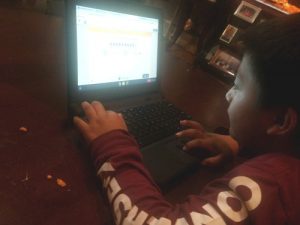 Here is what has kept me going during virtual instruction! This photograph is of a student who had not been participating online with Google Classroom in any capacity. Like other newcomers, he had made tremendous growth while we were in school. This 1st grader has a safe and loving life, yet he was filled with concerns regarding food and parent safety.
Here is what has kept me going during virtual instruction! This photograph is of a student who had not been participating online with Google Classroom in any capacity. Like other newcomers, he had made tremendous growth while we were in school. This 1st grader has a safe and loving life, yet he was filled with concerns regarding food and parent safety.
For months my instruction focused on the food. This house is filled with children. Once our district was able to provide for them, with the help of technology support and other family members, we finally got him on our Zoom meetings with the entire class, and he is participating in learning on various platforms. What I have come to realize is what is most important is learning can look different for each student. What I continue to support is letting families know we are here for them, and we will not give up. It is why we do what we do.
Nina Zucker is an English Language Learners (ELL) teacher at Clara Barton School in Cherry Hill, NJ.
Guest Contributor
Student Ambassador Program
By Angello Villarreal
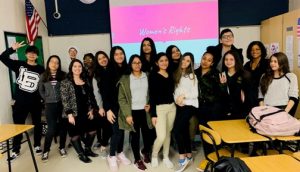 As a current ESL teacher and Spanish Adjunct Professor, educators have not yet seen in a K-12 school the learning of a new language called “Spanish as a Second Language” or “French Language Learners.” Nevertheless, we call students coming to this country English Language Learners, giving the assumption that if they do not know the language, it is a deficit. On the other hand, students learning and becoming proficient in a different language are considered talented. My experience goes beyond being an educator, as I was an ESL student that arrived in this country with not a word of English. There are not many clubs in a K-12 school geared exclusively to ELL students. Some might be “The International Club,” some other “Language Club,” or beyond but nothing related to explore and target their needs, strengths, and skills.
As a current ESL teacher and Spanish Adjunct Professor, educators have not yet seen in a K-12 school the learning of a new language called “Spanish as a Second Language” or “French Language Learners.” Nevertheless, we call students coming to this country English Language Learners, giving the assumption that if they do not know the language, it is a deficit. On the other hand, students learning and becoming proficient in a different language are considered talented. My experience goes beyond being an educator, as I was an ESL student that arrived in this country with not a word of English. There are not many clubs in a K-12 school geared exclusively to ELL students. Some might be “The International Club,” some other “Language Club,” or beyond but nothing related to explore and target their needs, strengths, and skills.
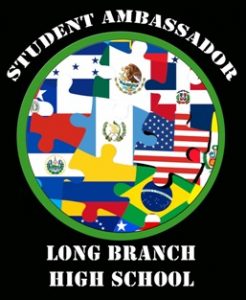 The extreme difficulties and struggles a newcomers experience when they arrive in this country and when they walk in for the first time to an American school are beyond imagination. To reduce the anxiety many of our students experience when they start classes, I created a group called “The Student Ambassador Program,” where we could utilize our current ELL students to help newcomers. Our Student Ambassadors are current students in the ESL program recommended by teachers. These students have shown leadership skills inside and outside the classrooms. The Student Ambassadors meet once a week to work on leadership, intrapersonal, and presentational skills while serving the school community. When a new ELL student arrives at our school, two Student Ambassadors are the ones that help that student from enrollment, building tours, school policies, and more information that a new student would need. They also participate in parent-teacher conferences helping parents navigate or with translations, school events, and create activities geared specifically for our ELL students. One of the most important components is that all activities are done in their native languages as we embrace and support their cultural backgrounds and utilize that as an asset.
The extreme difficulties and struggles a newcomers experience when they arrive in this country and when they walk in for the first time to an American school are beyond imagination. To reduce the anxiety many of our students experience when they start classes, I created a group called “The Student Ambassador Program,” where we could utilize our current ELL students to help newcomers. Our Student Ambassadors are current students in the ESL program recommended by teachers. These students have shown leadership skills inside and outside the classrooms. The Student Ambassadors meet once a week to work on leadership, intrapersonal, and presentational skills while serving the school community. When a new ELL student arrives at our school, two Student Ambassadors are the ones that help that student from enrollment, building tours, school policies, and more information that a new student would need. They also participate in parent-teacher conferences helping parents navigate or with translations, school events, and create activities geared specifically for our ELL students. One of the most important components is that all activities are done in their native languages as we embrace and support their cultural backgrounds and utilize that as an asset.
The idea first was expressed to other teachers, but to create such a program, it needed the support of administrators, and scholars to empower the initiative. The proposal was accepted and embraced by the school principals, ESL/Bilingual Supervisor, and our Chief Academic Officer, as well as leaders from Monmouth University. Most importantly, it was supported by all teachers and leaders in the school as they knew there was a need to give more opportunities to our ELL students by providing venues and helping them become leaders. A key element for the growth of the program was the amount of support our principals have given to The Student Ambassadors, as they see them as an excellent opportunity to have a deeper connection with the ESL population and community. We partner up with the Bilingual School Counselor, school principals, and other leaders to learn what some of the difficulties new ESL students have when they arrive, and we try to help as much as possible. It tremendously helps that our Student Ambassadors have gone through the same experiences when they arrived, so they share their insights.
In the short one-year of the creation of our Student Ambassador Program, we have had many successes to share. Students are utilizing this program to receive community service hours, so when they graduate, they can add it to their college applications and resumes. All the Ambassadors have a sense of pride as they are finally represented and empowered for who they are. Students feel that having English as a second language is not a deficit anymore, but an asset to this program and their struggles became a strength as they can mentor others. The challenges of the program are minimum but worth mentioning. Our meetings are held once a week after school. However, some students leave the meeting early as they either need to go to work or have to start taking care of their siblings. On the bright side, they all come in between classes to see what they missed. Another challenge is that in the proposal, it was set to have at least ten students as Ambassadors, but with all the recognition and support from the school community, we currently have 21 Student Ambassadors. It is a challenge as we needed to modify the activities as it was never expected to have this rapid growth. The benefits outweigh the challenges in this program, which makes the cause more meaningful. Our goal is to see more of these programs around the state or even the nation.
Angello Villarreal is a MAT graduate from Monmouth University licensed in Spanish, ESL & Bilingual/Bicultural. Angello is currently hired as an ESL high school teacher at Long Branch Public Schools in Long Branch, New Jersey, and is currently pursuing the Doctoral Program in education at Monmouth University.
Panoramic Prospects Post Pandemic & Protest
Jason Valante, Guest Contributor
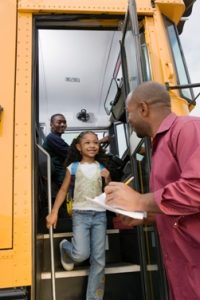 John Kennedy once said, “The time to fix the hole in the roof is when the rains have passed, and the sun is shining again” (Philosiblog, 2012). It seems that our English Language Learners and mainstream America are simultaneously learning new vocabulary. Vernaculars such as social distancing, distance learning, contact tracing, curve flattening, Blackout Tuesday, BLM, Run with Ahmad, and Justice for Floyd (among other 2020 notables) were not everyday English until this year. Citizens of humanity are still fighting self-destruction, seven score and 16 years after Lincoln delivered the Gettysburg Address. Today, frontline teachers are ensuring that these buzzwords do not become trigger words in our students once we have pivoted towards peace.
John Kennedy once said, “The time to fix the hole in the roof is when the rains have passed, and the sun is shining again” (Philosiblog, 2012). It seems that our English Language Learners and mainstream America are simultaneously learning new vocabulary. Vernaculars such as social distancing, distance learning, contact tracing, curve flattening, Blackout Tuesday, BLM, Run with Ahmad, and Justice for Floyd (among other 2020 notables) were not everyday English until this year. Citizens of humanity are still fighting self-destruction, seven score and 16 years after Lincoln delivered the Gettysburg Address. Today, frontline teachers are ensuring that these buzzwords do not become trigger words in our students once we have pivoted towards peace.
Everyone will have their own #mycovidstory or #NoJusticeNoPeace recollection by the time stay at home orders are lifted. Everyone continues to fight an invisible enemy (both in our lungs and in calcified hearts). Everyone continues to define that social distancing & social justice are not confined to physical distancing & physical justice.
As an elected member of the board of education in a suburban town, and as an educator teaching in an inner-city district, my gaze has a more panoramic lens. After some self-archeology, here are some insights:
• Teachers have been fighting for equality and inclusion in the classroom since before remote learning and peace protests, and educators will continue to work through this. Inequities that are online and on the streets are glaring. Freedom to life, liberty, and the pursuit of happiness have long been taken for granted.
• Current times have bent, but not broken, the student soul. We shed tears of sorrow, watching horrific social and medical tragedies. Still, we have also shed joyful tears of viral dedications to students, grandmas giving quarantined hugs to grandchildren, or folks peacefully marching in solidarity. Our students have been resilient but ultimately have breaking points. Come September, or whenever, they’ll need more love than ever. Teachers will be there to prescribe, administer, and monitor dosages of care their students have been deprived of. Warm greetings will not be taken for granted.
• The Class of 2020 has been forced to side-step many graduation ceremonies, but not the core rites of passage. Graduates have always faced difficult life choices, recommitted their right to an education and equality, and their tumultuous voices were echoed through virtual chat rooms and living rooms. Whether being able to jog home, or breathing free of the ventilator, those who have been holding their breath for so long need a breath of fresh air.
Panoramic prospects, post-pandemic, and protests, suggest that better days are indeed ahead. We won’t go back to normal. Normal wasn’t working. If we go back to the way things were, we lose the lesson. The current opportunity has afforded us the most significant teachable moment in our lifetime. The hackneyed expression, “but it’s always been like that before”, can no longer be an excuse. Today’s insights fortify tomorrow’s covenants. There are few things outside the realm of possibility anymore.
Works Cited
Philosioblog (2012). https://philosiblog.com/2012/12/11/the-time-to-repair-a-roof-is-when-the-sun-is-shining/
Jason Valente is an ESL Teacher at Public School 12 in Paterson, NJ.
